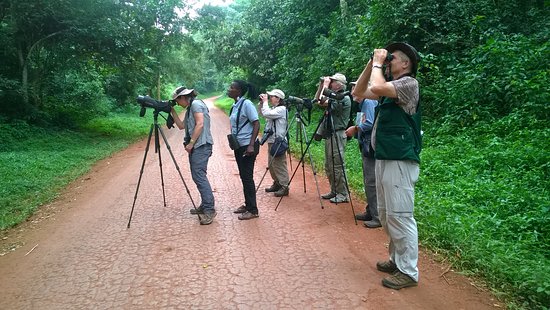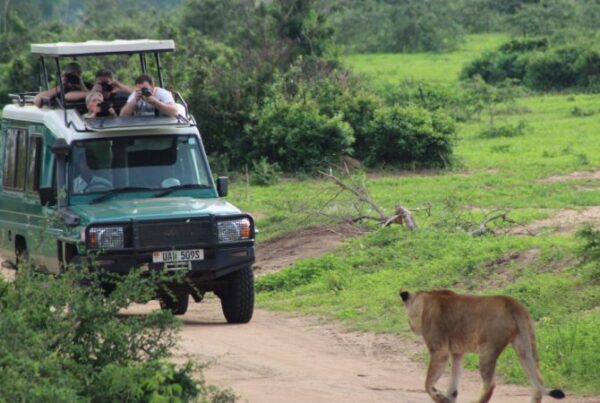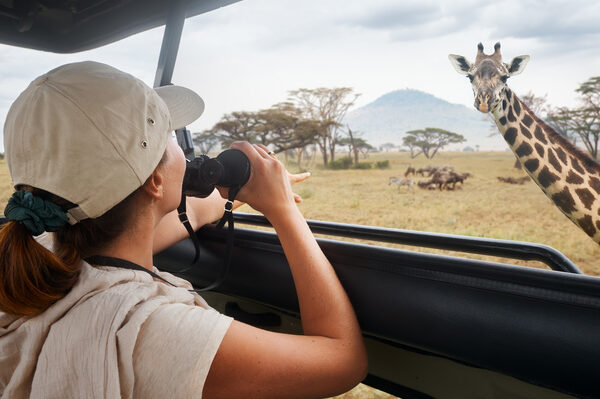How to Wildlife Photography Tips in Mabira Forest — Top Restaurants for Honeymooners
A Honeymoon Immersed in Nature and Culinary Delight
Mabira Forest, located in central Uganda, is a verdant tropical rainforest celebrated for its biodiversity, scenic trails, and abundant wildlife. For honeymooners seeking a blend of adventure, intimacy, and discovery, the forest offers a perfect backdrop to connect with nature while creating lasting memories. Beyond its ecological richness, the surrounding areas host a variety of culinary experiences, from cozy local eateries to fine dining establishments, allowing couples to pair wildlife exploration with gastronomic indulgence. For those traveling with cameras, Mabira provides a wealth of photographic opportunities, demanding careful planning and strategic techniques to capture both the forest’s wildlife and its immersive ambiance.
Understanding Mabira Forest as a Wildlife Photography Destination
Mabira Forest spans approximately 300 square kilometers and is home to primates, birds, butterflies, and diverse plant species. The dense canopy, interwoven with rivers and forest trails, supports species such as red-tailed monkeys, black-and-white colobus, and numerous forest birds including turacos, hornbills, and sunbirds. The forest’s diversity and relatively accessible trails make it an ideal destination for photographers seeking both portraits of wildlife and broader landscape compositions.
Early mornings and late afternoons are the most productive periods for wildlife observation. At dawn, the forest comes alive with the sounds and movements of birds and mammals, providing natural light that enhances photographic outcomes. Shadows and mist in the early morning create a mystical ambiance, while late afternoon sunlight filtering through the canopy highlights textures, colors, and contrasts critical for compelling imagery.
Essential Wildlife Photography Tips for Mabira
Wildlife photography in Mabira requires both technical preparedness and patient observation. Cameras with fast shutter speeds are recommended to capture rapid movements, while lenses of varying focal lengths allow flexibility between close-up shots of primates and wider frames of forest landscapes. Lightweight tripods and monopods facilitate stability during longer observation sessions, particularly when photographing shy or elusive species.
Understanding animal behavior is crucial for successful photography. Observing feeding, grooming, or territorial behaviors provides dynamic and natural compositions, while maintaining a safe distance ensures both safety and ethical responsibility. The use of natural light, reflections in water bodies, and shadow play enhances visual storytelling, allowing the forest’s atmosphere to become a key component of the photograph.
Patience and silence are emphasized. Many species in Mabira are sensitive to human presence, and quiet, deliberate movement often yields more authentic observations and photographic opportunities. For couples, wildlife photography can also be a shared activity, offering moments of collaboration and joint appreciation of the forest’s wonders.
Suggested Itinerary for Honeymoon Wildlife Photography
A structured itinerary enhances both safety and photographic success. Early mornings can be dedicated to guided forest walks, focusing on high-probability areas for bird and primate sightings. Midday periods, when activity may decline, can be used for rest, equipment maintenance, and reviewing captured images. Late afternoons are ideal for additional walks or visiting forest edges where lighting and wildlife activity are favorable.
Guides play an essential role in maximizing photographic outcomes. Their expertise in tracking wildlife, identifying species, and navigating trails allows honeymooners to focus on capturing high-quality images while minimizing the risks associated with unfamiliar terrain. Combining guided walks with moments of personal exploration ensures a balance between structured observation and spontaneous encounters.
Top Restaurants for Honeymooners Near Mabira Forest
After immersive exploration and photography sessions, culinary experiences provide an essential complement to a honeymoon itinerary. Several restaurants and lodges around Mabira Forest cater to couples seeking both ambiance and refined cuisine.
Restaurants in nearby towns such as Lugazi offer locally sourced ingredients, including fresh fish, tropical fruits, and traditional Ugandan dishes prepared with contemporary flair. Fine dining options often feature panoramic views of surrounding hills or forest edges, allowing couples to continue appreciating natural scenery while enjoying meals. Ambiance, privacy, and service quality are key considerations, ensuring that mealtimes are memorable extensions of the day’s adventures.
Some lodges within or adjacent to Mabira Forest provide in-house dining experiences that combine local flavors with international cuisine. These establishments often curate menus to reflect seasonal ingredients, creating opportunities for couples to enjoy freshly prepared meals while remaining immersed in the natural setting. Sunset dining experiences near forest trails or rivers enhance the romantic atmosphere, offering both visual and gustatory pleasure.
Integrating Wildlife Photography and Dining Experiences
Combining wildlife photography with curated dining experiences enhances the overall honeymoon journey. Couples can plan photography sessions around sunrise and sunset lighting, followed by meals that provide relaxation and reflection. These moments also allow for discussion of images, planning of future excursions, and sharing of insights on wildlife behavior.
Restaurants near Mabira often integrate cultural elements, such as local music, art, and décor, adding a sense of place to the dining experience. Capturing these interactions photographically complements forest photography, producing a holistic visual narrative that celebrates both nature and human creativity.
Health and Safety Considerations
Safety is essential for both wildlife exploration and general travel. Proper footwear, protective clothing, and insect repellents are crucial in forest environments. Couples are advised to maintain hydration, follow trail guidelines, and carry first-aid supplies to handle minor incidents.
Food safety and hygiene should also be prioritized. Restaurants with high standards and fresh ingredients reduce the risk of illness, allowing honeymooners to focus on enjoyment and creativity. Awareness of local customs and respectful engagement with staff enhances both safety and the overall travel experience.
Tips for a Memorable Honeymoon Experience
Maximizing the honeymoon experience in Mabira requires careful balance between adventure and relaxation. Early planning of photography sessions, mindful engagement with wildlife, and selecting dining experiences that reflect both local culture and personal preferences enhance satisfaction. Couples should schedule periods for quiet reflection, forest meditation, and casual strolls, ensuring that the pace allows for both active exploration and intimate connection.
Documenting experiences through photography not only preserves memories but also enables storytelling, sharing encounters with friends, family, or online communities. Maintaining ethical standards in wildlife photography, such as avoiding disturbance and respecting species’ habitats, ensures that the forest’s ecological integrity remains intact for future visitors.
A Harmonious Blend of Nature and Romance
Mabira Forest offers a unique opportunity for honeymooners to combine wildlife photography with cultural and culinary experiences, creating a journey that is both visually captivating and romantically fulfilling. By carefully planning photography excursions, selecting restaurants that enhance the experience, and adhering to safety and ethical guidelines, couples can enjoy a seamless integration of adventure, intimacy, and natural beauty.
To ensure a well-organized and enriching trip, it is recommended to book your Africa tours and safaris via WildHorn Africa, where expert guidance guarantees that every aspect—from early morning wildlife photography to evening dining—is thoughtfully curated for a memorable and safe honeymoon experience in Mabira Forest.





 WildHorn Africa – Authentic and unforgettable tours across Africa, guided by local experts who know the land, wildlife, and culture best.
WildHorn Africa – Authentic and unforgettable tours across Africa, guided by local experts who know the land, wildlife, and culture best.


